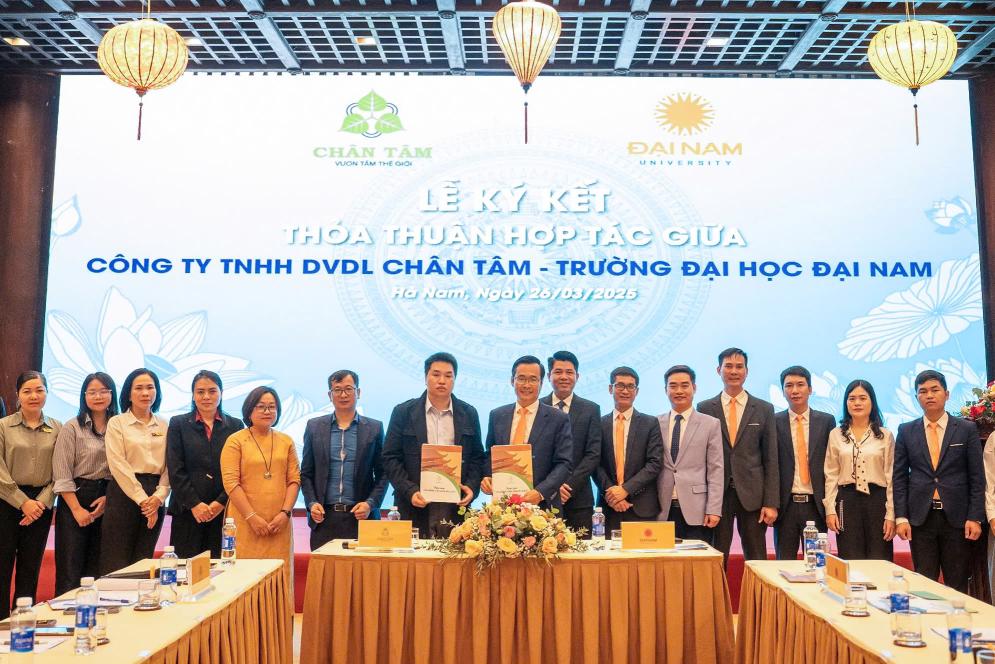New points in Circular 107/2017/TT-BTC issued on October 10, 2017 officially applied from January 1, 2018
Posted date 21/11/2017
21.922 view

New points in Circular 107/2017/TT-BTC issued on October 10, 2017 officially applied from January 1, 2018
MSc. Tran Thi Hong Hue
Faculty of Accounting, Dai Nam University
1. About accounting documentsFaculty of Accounting, Dai Nam University
- All administrative units must use a uniform set of mandatory accounting documents and must not modify issued information.
- In addition to the required accounting documents, administrative units are allowed to design their own document templates to reflect arising economic transactions and must make them for reporting together with the sample documents.
- Pre-printed documents such as checks, receipts and valuable papers must be carefully preserved and not damaged or rotted. They must be managed like money.
2. About accounting accounts:
Regarding accounting accounts, Circular 107/2017/TT-BTC also clearly stipulates:
- Accounting accounts regularly, continuously, systematically reflect the situation of assets, receipt and use of funds provided by the state budget and other sources of funds; the situation of revenue, expenditure, and operating results in administrative and public service units.
- Accounting accounts are classified into types such as:
+ The account types in the table range from type 1 to type 9 and are double-entry.
+ Off-balance sheet accounts include type 0 accounts and single entries.
- Depending on the characteristics of each accounting unit, a suitable sample accounting system can be selected.
- Changes to the Account are as follows:
| STT | ADDITIONAL | CHANGE ACCOUNT NAME | CANCEL | ACCOUNT NUMBER | ACCOUNT NAME |
| 1 | x | 131 | Accounts receivable | ||
| 2 | x | 133 | VAT deductible | ||
| 3 | x | 136 | Internal receivables | ||
| 4 | x | 137 | Temporary | ||
| 5 | x | 138 | Other receivables | ||
| 6 | x | 141 | Advance | ||
| 7 | x | 154 | Cost of production, unfinished services | ||
| 8 | x | 156 | Goods | ||
| 9 | x | 221 | Long-term financial investment | ||
| 10 | x | 242 | Prepaid expenses | ||
| 11 | x | 248 | Deposit, bet, deposit | ||
| 12 | x | 311 | Accounts Receivable | ||
| 13 | x | 312 | Advance | ||
| 14 | x | 313 | Loan | ||
| 15 | x | 331 | Payable to Seller | ||
| 16 | x | 334 | Payable to workers | ||
| 17 | x | 335 | Payable to other entities | ||
| 18 | x | 336 | Internal payables | ||
| 19 | x | 337 | Temporary collection | ||
| 20 | x | 338 | Other payables | ||
| 21 | x | 341 | Funding for subordinates | ||
| 22 | x | 342 | Internal payment | ||
| 23 | x | 348 | Receive deposits, collateral, bets | ||
| 24 | x | 353 | Special funds | ||
| 25 | x | 366 | Unrecorded advances | ||
| 26 | x | 412 | Asset revaluation difference | ||
| 27 | x | 441 | Source of basic construction investment funds | ||
| 28 | x | 461 | Operating Funds | ||
| 29 | x | 462 | Project funding sources | ||
| 30 | x | 465 | Funding source according to State orders | ||
| 31 | x | 466 | Funding source for forming fixed assets | ||
| 32 | x | 468 | Source of salary reform | ||
| 33 | x | 511 | Revenue from activities provided by the State budget | ||
| 34 | x | 512 | Foreign aid and loans | ||
| 35 | x | 514 | Fees are deductible, leaving | ||
| 36 | x | 515 | Financial revenue | ||
| 37 | x | 521 | Revenue not yet passed through the budget | ||
| 38 | x | 531 | Revenue from production, business and service activities | ||
| 39 | x | 631 | Production and business operating expenses | ||
| 40 | x | 635 | State order expenditure | ||
| 41 | x | 643 | Prepaid expenses | ||
| 42 | x | 661 | Operating expenses | ||
| 43 | x | 662 | Project cost | ||
| 44 | x | 611 | Operating costs | ||
| 45 | x | 612 | Costs from foreign aid and loans | ||
| 46 | x | 614 | Toll collection costs | ||
| 47 | x | 615 | Financial costs | ||
| 48 | x | 632 | Cost of goods sold | ||
| 49 | x | 642 | Management costs of production, business and service activities | ||
| 50 | x | 652 | Costs with unknown cost bearers | ||
| 51 | x | 711 | Other income | ||
| 52 | x | 811 | Other costs | ||
| 53 | x | 821 | Corporate income tax expense | ||
| 54 | x | 911 | Determine the results | ||
| 55 | x | 004 | Non-refundable aid | ||
| 56 | x | 005 | Durable tools in use | ||
| 57 | x | 006 | Foreign debt forecast | ||
| 58 | x | 009 | Construction investment estimate | ||
| 59 | x | 012 | Actual payment order | ||
| 60 | x | 013 | Advance payment order | ||
| 61 | x | 014 | Fees are deducted, leaving | ||
| 62 | x | 018 | Other operating income is retained |
3. About accounting books
- Each accounting unit only uses one accounting system for one accounting year. Including general accounting books and detailed accounting books.
- Must open detailed accounting books to monitor the process of receiving and using foreign aid and loans according to the state budget directory as a basis for preparing settlement reports and donor requests.
- According to Circular 107/2017/TT-BTC, accounting books have the following forms:
+ Journal: this is a type of book used to record economic and financial transactions in chronological order.
+ Ledger: this is a type of book used to record economic and financial transactions arising according to economic content (according to accounting accounts).
+ Detailed accounting book: This is a book used to record in detail economic and financial transactions arising related to accounting objects according to management requirements that the general ledger has not yet reflected in detail. The data in the detailed accounting book provides specific information for internal management of the unit and the preparation of indicators in financial statements and state budget settlement reports.
4. About the settlement report
Circular 107/2017/TT-BTC clearly stipulates that administrative units using the state budget must prepare a budget settlement report for the portion of funds allocated by the state budget.
The information on the State Budget Settlement Report serves to assess the compliance with the provisions of the law on the State budget and other financial mechanisms that the unit is responsible for implementing, and is an important basis for state agencies, superior units and unit leaders to inspect, evaluate, monitor and operate the financial and budgetary activities of the unit. In addition, through this Report, the State aims to grasp the status of receiving and using the State budget. Is it effective? Is it used for the right purpose? The preparation of this settlement report also helps the State grasp the revenue and expenditure status of the unit in the most specific way.
The above article of the author has clearly stated the new regulations in the accounting regime that Circular 107/2017/TT-BTC issued and officially applied on January 1, 2018. Hopefully, the above information will help administrative and career units; lecturers; students; scientists; managers grasp the changes in the new accounting regime in the most complete and useful way according to the provisions of law.
Good luck!
Latest article
View all Posts
Related articles
See all related Articles
Register for admission consultation 2025
Dai Nam University offers admissions to
36 academic programs
across a diverse range of disciplines, including Healthcare, Engineering and Technology, Economics and Business, and Social Sciences and Humanities.
Register now to secure
scholarships and tuition support worth up to 55 billion VND
scholarships and tuition support worth up to 55 billion VND

Register now to secure
scholarships and tuition support worth up to 55 billion VND
scholarships and tuition support worth up to 55 billion VND








